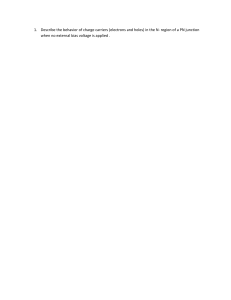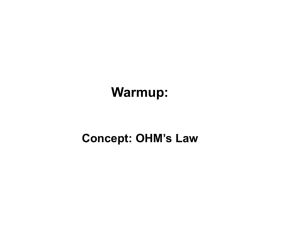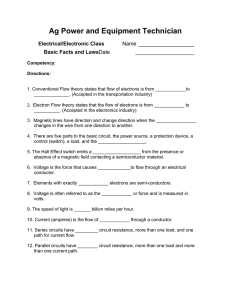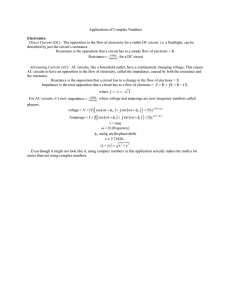Phy 122 – Assignment 3:
advertisement
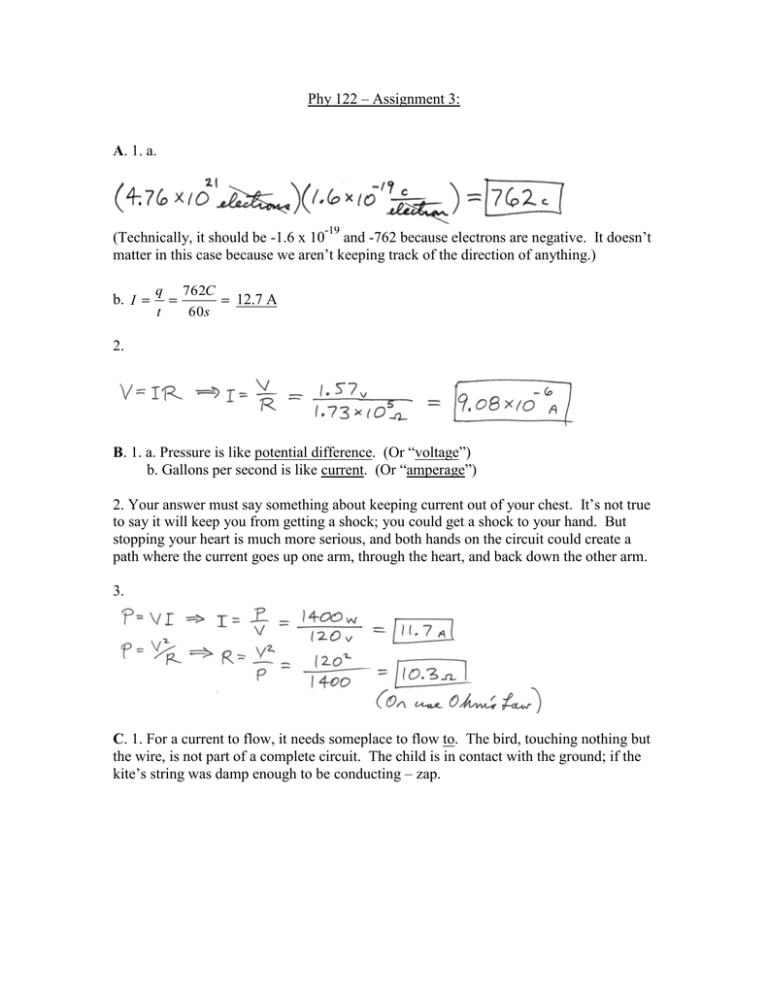
Phy 122 – Assignment 3: A. 1. a. -19 (Technically, it should be -1.6 x 10 and -762 because electrons are negative. It doesn’t matter in this case because we aren’t keeping track of the direction of anything.) b. I q 762C t 60s 12.7 A 2. B. 1. a. Pressure is like potential difference. (Or “voltage”) b. Gallons per second is like current. (Or “amperage”) 2. Your answer must say something about keeping current out of your chest. It’s not true to say it will keep you from getting a shock; you could get a shock to your hand. But stopping your heart is much more serious, and both hands on the circuit could create a path where the current goes up one arm, through the heart, and back down the other arm. 3. C. 1. For a current to flow, it needs someplace to flow to. The bird, touching nothing but the wire, is not part of a complete circuit. The child is in contact with the ground; if the kite’s string was damp enough to be conducting – zap. 2. D. 1. a. Same. Current is the rate that charge flows by. The electrons carrying the charge have nowhere to go other than to continue down the wires. b. More. There is a voltage drop when current flows through a resistor. c. More. Energy per unit charge is the same thing as voltage, so this is just part (b) again. 2. E. 1. Less Power corresponds to a higher resistance. Power = V2/R, so with the same voltage on both, more ohms means less watts. More power corresponds to a greater current, by P = VI. In words instead of equations: (b) If each electron carries the same energy (V is the same), it takes more electrons per second (more current) to deliver more energy per second (more power). (a) For that greater current to get through the higher power bulb, it must have less resistance. 2. 3. P = ΔU/t ΔU = Pt (ΔU = work, which means the same thing as energy delivered.) Rounding to three digits: $4.67
